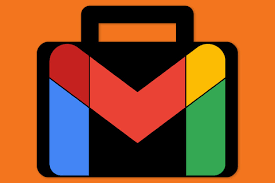[ad_1]
Unlocking the Power of G Suite: A Comprehensive Guide to Account Setup and Optimization
In today’s digital age, it’s crucial for businesses and individuals to have efficient and effective communication and collaboration tools. One such tool that has gained popularity in recent years is G Suite, developed by Google. G Suite offers a comprehensive set of productivity tools designed specifically for businesses, including email, cloud storage, document editing, and video conferencing. In this article, we will explore the various features of G Suite and provide a step-by-step guide on setting up and optimizing your G Suite account.
Getting Started with G Suite
Before setting up your G Suite account, you need to decide on a plan that suits your needs. G Suite offers several plans, including Basic, Business, and Enterprise, each with its own set of features and pricing. Once you have chosen a plan, you can sign up for a G Suite account by visiting the G Suite website and following the prompts.
Setting up Your G Suite Account
1. Domain Verification: The first step in setting up your G Suite account is verifying your domain ownership. This involves adding a TXT or CNAME record to your domain’s DNS settings, which proves that you own the domain. G Suite provides detailed instructions on how to perform this step, and it usually takes only a few minutes to complete.
2. User Provisioning: After verifying your domain, you can start adding users to your G Suite account. You can create individual user accounts or upload a CSV file to add multiple users at once. Each user will have their own G Suite email address and access to the suite of productivity tools.

3. Email Migration: If you are switching from another email service, you can migrate your existing emails to your G Suite account. G Suite offers several methods for migration, including using the G Suite Migration for Microsoft Outlook tool or the Gmail API. Follow the migration instructions provided by G Suite to ensure a seamless transition.
Exploring G Suite’s Productivity Tools
Once you have set up your G Suite account, you can start exploring the various productivity tools it offers. Here are some of the key features of G Suite:
1. Gmail: G Suite’s email service offers a professional, ad-free email experience with a personalized domain name. You can access your emails from anywhere, collaborate with colleagues using Google Meet, and use advanced features like email filters and labels to keep your inbox organized.
2. Drive: G Suite’s cloud storage solution, Drive, allows you to store and access your files securely from any device. You can create, edit, and share documents, spreadsheets, and presentations using Google Docs, Sheets, and Slides. Drive also offers powerful search and collaboration features, making it easy to work on projects with team members.
3. Calendar: G Suite’s Calendar tool helps you manage your schedule and stay organized. You can create events, invite attendees, and set reminders for important deadlines or meetings. Calendar also integrates seamlessly with other G Suite tools, making it easier to schedule and join video conferences using Google Meet.
4. Meet: G Suite’s video conferencing tool, Meet, allows you to hold virtual meetings with colleagues or clients from anywhere. Meet offers features like screen sharing, chat, and recording, making it a versatile tool for collaboration and communication.
Optimizing Your G Suite Account
Now that you have set up your G Suite account and familiarized yourself with the various productivity tools it offers, it’s time to optimize your account for optimal efficiency and productivity. Here are some tips to get the most out of your G Suite experience:
1. Customize your Settings: Go through the settings of each G Suite tool to personalize your experience. You can adjust email filters and labels, set up notifications for calendar events, and customize the appearance of your Drive interface.
2. Explore Third-Party Integrations: G Suite integrates with a wide range of third-party apps and services, allowing you to streamline your workflow. Explore the G Suite Marketplace to find integrations that fit your business needs, such as project management tools or CRM software.
3. Train Your Team: If you are setting up G Suite for a team or organization, invest time in training your team members on the various features and best practices. G Suite offers online training resources, including interactive tutorials and certification programs, to help users make the most of the tools.
4. Enable Two-Factor Authentication: To enhance the security of your G Suite account, enable two-factor authentication (2FA). This adds an extra layer of protection by requiring users to provide a second form of verification, such as a unique code sent to their mobile device, when logging in.
Google Ads Launches Revolutionary Features for Enhanced Advertising Strategies
Conclusion
G Suite is a powerful suite of productivity tools that can significantly enhance communication and collaboration within businesses. By following the steps outlined in this guide, you can set up and optimize your G Suite account for maximum productivity. Take the time to explore the various features and customize the settings to suit your needs. With G Suite, you can unlock the power of efficient and effective communication and collaboration.
[ad_2]




